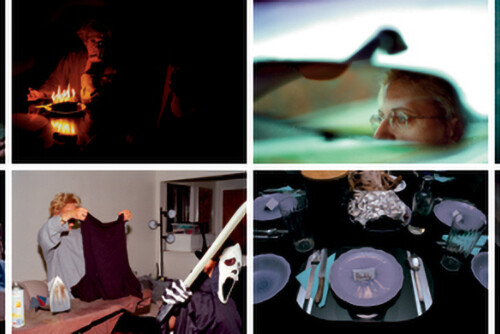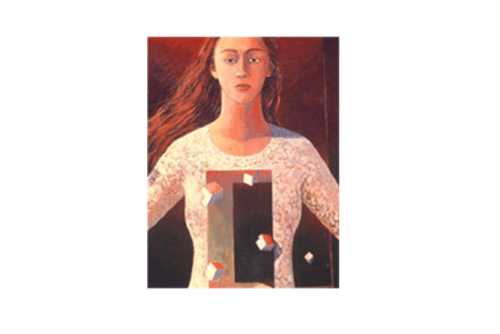Things get more specific in Part 2 of this issue, “Paris’ Call and Baker’s Response.” Addressing the initial moments of Baker’s celebrity, Terri J. Gordon and Tyler Stovall consider the convergence of aesthetic and historical circumstances that primed Parisians for Baker’s appearance on stage and screen during the 1920s and 1930s. Looking at the Roaring Twenties as a particular spatio-temporal site, they discuss exactly what was expected of blacks, of women, and of black women in modernizing interwar France. From there, they note the particulars of Baker’s response to these expectations—her “self”-positioning with respect to such phenomena as the “new womanhood,” the weakening of empire, black American expatriatism, and the rising popularity of jazz across Western Europe. Gordon’s “Synesthetic Rhythms: African American Music and Dance Through Parisian Eyes” provides an analysis of the artistic scene that set the stage for the success of the Black Venus. Looking at jazz as the motive force of modernity, Gordon reads closely the language of the contemporary Parisian press to account for the enthusiasm with which Baker’s primitivist showgirl routine was greeted by a cosmopolitan, metropolitan public. In “The New Woman and the New Empire: Josephine Baker and Changing Views of Femininity in Interwar France,” Stovall examines the reiterated performative trope of impossible interracial romance as it appears in Baker’s music hall and filmic performances. He reads this placement of brown Baker as the almost-but-not-quite love interest of white European males as revelatory of increasing French ambivalence toward women, toward France’s imperial subjects, and toward the project of empire in general.
Part 3, “Baker’s Craft,” is concerned with the various traditions that inform Josephine Baker’s expression as a hybrid performer. Anthea Kraut, Daphne Ann Brooks, and Mae Gwendolyn Henderson pose questions regarding Baker’s “tangible” contributions, the specifics of her performance techniques, and the extent to which these elements of her enormous talent have at times been obscured by the drama surrounding her persona. In “Whose Choreography?: Josephine Baker and the Question of (Dance) Authorship,” Kraut reflects on Baker’s creative agency as a place from which to think more broadly about black female agency in the arts. She considers Baker’s refashioning of elements from the black vernacular tradition as subtle gestures of resistance in a white entertainment context that often denied her value as an artist. Brooks looks also at Baker’s incorporation of African American traditions into her performances. Specifically, she investigates in “The End of the Line: Josephine Baker and the Politics of Black Women’s Corporeal Comedy” how Baker’s stage “antics” can be read alongside of and inserted into a tradition of black women entertainers who, while making spectacles of themselves, managed to subvert paradigms that stereotyped their performing bodies. In “Colonial, Postcolonial, and Diasporic Readings of Josephine Baker as Dancer and Performance Artist,” Henderson further interrogates Baker’s choreographic practices in an effort to acknowledge the multiple possible interpretations of her seemingly stereotypical but implicitly subversive self-representation.
“Staging Tensions, Crossing Borders, Dancing In-Between,” Part 4 of our project, is about Baker’s skillful manipulation of the ways in which she found herself treated by her admirers, her handlers, and her public. Claudine Raynaud and Felicia McCarren investigate specific instances of this careful negotiation on Baker’s part. In “Foil, Fiction, and Phantasm: ‘Josephine Baker’ in Princesse Tam-Tam,” Raynaud offers a close reading of one of Baker’s most successful films. She notes the film’s inclusion of specific biographical elements in the fiction of its narrative, and so reveals the fantasy and the phantasm at the heart of Baker’s “real” and performative identities. McCarren, in “The Use-Value of ‘Josephine Baker’,” similarly wonders about the specifics of Baker’s play with the public and private versions of her body and her self. McCarren looks at Baker as a clever negotiator, able to walk the fine line between primitivism and cinematic technology, and to carefully preserve an illusion of Africanized naturalness in the middle of “the West’s” machine culture.
Part 5, “Agent(?) Josephine,” returns to this matter of Baker’s agency. Here, though, she is considered not only as a performer but also as a resistance worker and humanitarian, and the question is posed as to whether hers was a naïve or a visionary consciousness (or some combination of the two). Terri Francis, Jonathan Eburne, and Walter Kalaidjian discuss the manner in which Baker’s transcendent identity as an entertainer enabled her to function on an international level, both during and long after her banana-skirt days. Francis, in “What Does Beyoncé See in Josephine Baker?: A Brief Film History of Sampling La Diva, La Bakaire,” explores the usefulness of Baker’s image in film as a conduit for the liberation of repressed, suppressed, or otherwise limited persons searching for a means of self-expression. In “Adoptive Affinities: Josephine Baker’s Humanist International,” Eburne offers a compelling analysis of Baker’s “rainbow tribe” through the lens of her relationship to both France and the United States and the racism with which she was confronted in both countries. Finally, “Josephine Baker, Performance, and the Traumatic Real” proposes a psychoanalytical approach to Baker’s choices as a performer. Kalaidjian considers Baker’s agency as embedded in a tradition that includes Gwendolyn Bennett and Countee Cullen as they reflect on the poetics of possession, the gaze, and the black (female) body.



